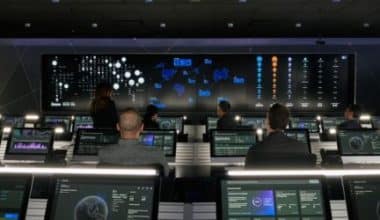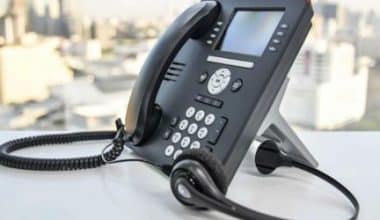Computers, cell phones, tablets, and other similar electronic devices all have their own proprietary operating systems. The utility value of a computer or smartphone is powered by the COS. You can learn about the distinctive features and capabilities of computer operating systems by understanding them, which will aid in the decision-making process. In this article, we define a computer operating system(s) and its examples, describe what it does, and list the many types of computer operating.
Computer Operating Systems
A computer operating system serves as a software conduit between the user and the hardware of a device. Users can engage with the device and carry out their intended functions thanks to it. Every software and application used by a computer or mobile device is, therefore, supported and handled by the COS. In order to communicate with the computer or device, a COS also uses a graphic user interface (GUI), which combines text and graphics. Every smart device or computer needs an OS to carry out its functions and run its applications due to its fundamental nature.
The kernel and the shell are two COS components that are used to manage computer applications and programs. The kernel is the central internal element of the system and handles all hardware-level data processing for the computer. It also manages memory, processes, and input-output. The shell, in contrast, is the system’s top layer and manages communication between the COS and the user. By accepting input from a shell script or the user, the shell communicates with the COS. Shell scripts are a list of commands the operating system keeps in a file.
Functions of A Computer Operating Systems
To name a few functions a COS performs in a smart device, they are ln the form of:
#1. Security
The COS offers security to the user by limiting access to and entry of data. By utilizing passwords to secure their files, users can also take advantage of this capability. Modern operating systems also use firewalls for security. It keeps track of all computer activities and stops anything it considers to be dangerous. As a result, experts assess a COS’s dependability based on its security capabilities.
#2. System Performance
By tracking the length of time it takes for the system to respond to a service request, a COS can also aid a device’s system performance. The COS alerts the user when there is an unusual time deviation. This is crucial since a viral attack could be the cause of such little or significant variance.
#3. Resource Scheduling
The list of jobs that a device can carry out within a computer system is created by a COS, which also chooses which duties are assigned to a device. When numerous jobs must be completed simultaneously, this task gets complicated. The order in which the devices accomplish the jobs is determined by the system’s scheduling capability. Depending on the COS’s performance priority set by the user, it also performs various activities.
#4. Memory Control
The device’s main memory is controlled by the COS. The main memory is made up of a number of bytes, each of which has a distinct address. The CPU is also used to access this memory by the computer. The COS determines what memory it may allocate to a program and how much memory it may allocate after observing the principal memory utilization for each application. It also establishes how many users must have access in order to verify the RAM status.
#5. File Management
The OS is also in charge of managing files. In order to facilitate quick access when needed, it organizes the file system into pertinent folders. The OS records and keeps track of information about the files, user access preferences and specifics, and the running status of each file. By accessing the time periods and logs, the user is then able to access the files and offer their details. Because of its capabilities for managing files, experts refer to the OS as the file system.
Computer Operating System Examples
Having known the definition of a computer operating system, here are some examples of the operating system:
#1. Microsoft Windows.
The most widely used OS, despite the fact that it is actually a collection of distributions (an operating environment) designed to give previous Operating Systems (such as MS-DOS) a graphical user interface and a set of software tools. Its initial iteration debuted in 1985. Since then, it has continued to be updated with stronger and more varied versions as Microsoft, its parent firm, dominates the market for digital technologies.
#2. GNU / Linux.
When used together, the free GNU distribution and the “Linux” kernel from the Unix family are referred to as “Linux.” As a result, one of the key figures in the creation of free software, whose source code may be freely used, altered, and distributed, has emerged.
#3. UNIX.
Early in 1969, this portable, multi-tasking, multi-user operating system was created, and over time, different businesses have owned the copyright to it. In truth, it is a group of related operating systems that all use the Linux kernel and include both free and commercial versions of several of them.
#4. Fedora.
It is essentially a general-purpose Linux distribution that was created as a community initiative after Red Hat Linux, with whom he is closely associated, was discontinued. In its three primary versions—Workstation, Cloud, and Server—it is yet another essential name when discussing free software and open source.
#5. Ubuntu.
This free and open-source operating system, which is based on GNU/Linux, gets its name from a South African philosophy emphasizing the devotion of man to other species. In this regard, Ubuntu is user-friendly and liberated, even if Canonical, the British business that owns the rights to the software, relies on technical services related to it to stay afloat.
#6. MacOS.
Since 2002, Apple-branded computers have included the Macintosh operating system, usually referred to as OSX or Mac OS X, as part of their hardware lineup. This environment-based operating system is based on Unix. Apple published a portion of this software family as an open-source operating system called Darwin, to which they eventually added components like Aqua and the Finder to create the user interface that serves as the foundation for Mac OS X, the most recent version.
#7. Haiku.
The open-source operating system is compatible with the BeOS (Be Operating System) and is centered on the personal computer and multimedia components. Its main characteristic is the ability of each user to create their own distributions. It is currently being created.
#8. BeOS.
It is a PC Operating System created in 1990 by Be Incorporated with the goal of maximizing multimedia performance. The presence of the Bash command interface has led to claims that it is based on Unix, although BeOs feature an original modular microkernel that is highly optimized for handling audio, video, and animated graphics. Additionally, it is single-user, unlike Unix.
#9. MS-DOS.
Acronyms for Microsoft Disk Operating System, which from the 1980s until the mid-1990s was one of the most widely used Operating Systems for IBM personal computers. It was controlled by a monochromatic interface of lines using a variety of internal and external commands. highly distinctive command line.
Types of Computer Operating Systems
In most cases, operating systems come pre-installed on computers. We will, therefore, explore many computer operating system types below:
#1. Apple iOS
The iOS mobile operating system from Apple is well-liked. It is compatible with iPad tablets and iPhones, among other Apple devices. A clean, simplified UI with few hardware buttons, a strong safety and encryption focus to limit what unauthorized users can take from the phone, and an app store where users can purchase and download free apps are just a few of the iOS features.
#2. Microsoft Windows
Microsoft Windows has been around since 1985 and continues to be the most popular home and office software operating system. The most recent versions, including Windows 10, are also used in some devices, and the OS is also used in some internet and server PCs. Many different firms’ machines can run Windows. The early versions of Windows used a modern interface in addition to the standard DOS text-driven instructions in a previous Microsoft operating system called MS-DOS. Windows themselves, panel screens that represent distinct apps in a rectangular shape, are among the distinguishing characteristics of the Microsoft Windows UI. Generations of users have found their programs and data with the help of Windows’ start menu.
#3. Apple MAC OS
As a replacement for the well-known operating system OS X, Apple’s macOS is installed on its laptops and desktop computers. MacOS has some features with other Unix-related systems, notably Linux, as a result of research on the historical Unix family of operating systems conducted at AT&T’s Bell Labs in the 1960s. Although the graphical interfaces differ, many of the command-line capabilities and programming interfaces are the same. Signature components of macOS include the dock, which is used to look for frequently used programs and files, and single keyboard keys, such as the Command key. The user-friendly features of macOS, including Siri, FaceTime, Apple’s video chat program, and a personal assistant with a natural voice, are legendary.
#4. Linux Operating System
Similar to Unix, Linux is an operating system for computers that was created under the free and open-source software development and distribution approach. The Linux kernel, the initial operating system kernel published by Linus Torvalds on September 17, 1991, is Linux’s most well-known feature. The operating system is putting itself in memory and starts to manage the resources of the computer. Following that, it provides specific tools for running other programs that the customer requests. The majority of embedded systems currently use Linux. Linux can be used to run devices like a washing machine, refrigerator, TV, and internet router. Linux is therefore one of the most widely used operating systems today.
How a Computer Operating System Works?
There are two ways that the computer operating system functions:
#1. Real-Time Operating System
Multitasking systems are another name for real-time operating systems. The normal system is in charge of overseeing the hardware resources on a computer. Although it performs these functions, the RTOS is specially built with great reliability to run programs at a scheduled or specific time.
#2. Normal Operating System
There are two categories for the typical operating system:
- GUI: The graphical user interface (GUI) is a mouse-based functional system that allows users to perform actions without having to type keyboard commands. It is also possible to open or close files or icons by clicking the mouse. The GUI operating systems are thus controlled in a variety of ways using the mouse and keyboard.
- CUI: This is a text-based operating system that thus enables command-line interaction with applications or files to carry out specific tasks. The command line operating system will only accept keyboard input for commands. The operating systems for command lines include DOS and UNIX. The advanced GUI is slower than the advanced operating system for commands.
How Many OS Systems Are There?
In the world, there are more than 613 different operating systems.
What Is the Latest Operating System for PC?
The most recent release is Windows 11.
Which Operating System Is Better?
One of the best options for desktop computers and laptops is the Microsoft-created Windows operating system.
What Is Better Windows 10 or 11?
For the majority of users, Windows 11 is worth the update. Numerous new features, performance enhancements, and design modifications are included.
Related Posts
- CHAIN OF COMMAND: Definition, Meaning & Examples
- ECONOMIC SYSTEM. Types Of Economic System Of The U.S
- BEST LINUX CERTIFICATION 2023 (Updated!)
- Mélofée: a newly discovered malware that Linux-based businesses should watch out for






